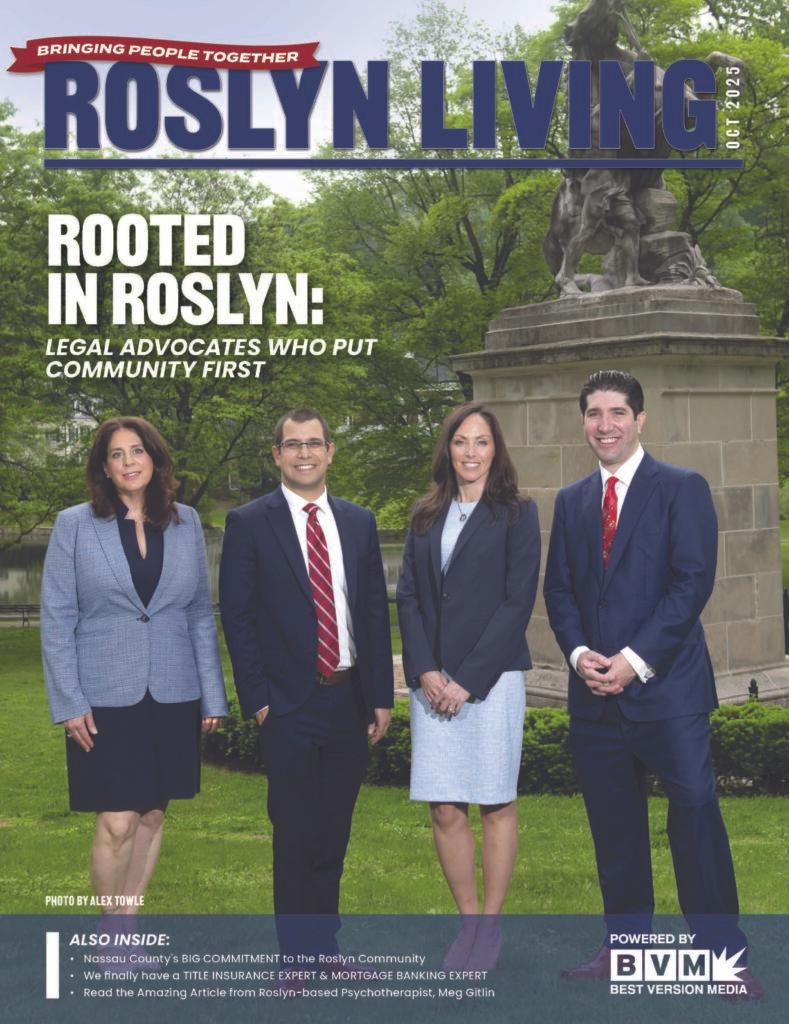By Patrick Formato
Co-Author: Ari J. Markenson, J.D, M.P.H.
Introduction
The enactment of the Balanced Budget Act of 1997 1 dramatically changed the financial arrangements by which Medicare Skilled Nursing Facilities (SNFs) are reimbursed under the Medicare system. The BBA has also changed the landscape in which SNFs can associate with outside (independent contractor) ancillary providers. This dramatic change came in two parts, the prospective payment system (PPS) and Consolidated Billing. The changes have forced most SNFs to renegotiate their agreements with ancillary providers_ As a result of cost containment incentives inherent in PPS and the potential profit opportunities for SNFs associated with consolidated billing SNFs have sought new contractual arrangements for ancillary services. These arrangements typically involve discounts and differential charges based upon payor source. However, such arrangements have raised serious fraud and abuse concerns. In particular these type of contractual arrangements may constitute violations of the anti-kickback statute 42 U.S.C. § 1320a-7b. These fraud and abuse implications are evidenced most clearly by the recently released Department of Health and Human Services, Office of the Inspector General (OIG) advisory opinion (99-2) concerning an arrangement between a SNF and an ambulance provider.
I. Medicare PPS for SNFs
The PPS legislation is contained in § 4432 of the BBA. The corresponding regulations were published on July 30, 1999, as a final rule in the Federal Register, at 64 Fed. Reg. 41644. This legislation has changed SNF reimbursement so that SNFs are no longer reimbursed on a cost based system but rather via a prospectively determined per diem rate. Beginning January 1, 1999 Medicare Part A reimburses a SNF a fixed per diem or daily fee based on a SNF resident’s classification within the Medicare RUGS III guidelines. RUGS is an acronym for Resource Based Utilization Groups. These guidelines are a measure of the type of care the resident requires and what it costs the SNF to provide that care to the resident. The SNF evaluates a resident’s health condition based on a standardized assessment form (called the MDS 2.0 or Minimum Data Set) provided by the Health Care Financing Administration (HCFA). Information from the MDS 2.0 is then used to assign the resident a RUGS III category.
Under PPS, the facility is financially responsible for all Medicare Part A and B services (with some limitations) 2 provided to a resident while in a so-called Part A stay. Thus, most outside providers who may have previously provided services to a Part A resident and billed directly must now look to the facility for payment.
Many SNFs are finding the cost pressures of PPS to be an enormous burden. SNFs are finding that the rates paid to facilities are wholly inadequate to cover the cost of services that they are now required to provide under a per diem rate. SNFs have argued, to no avail, that the intention of the PPS legislation is not being carried out and the rate cuts are simply too deep. In fact, in the early legislative history to the PPS legislation, Senator Hatch remarked that “it would be unfortunate for HCFA to put into effect a system that did not adequately account for the medical services offered to residents within a skilled nursing home. I urge HCFA to implement and include all ancillaries only when the data and the information are adequate.” 3 It does seem on many levels that Senator Hatch’s words went completely ignored in HCFA’s implementation of PPS for SNFs. HCFA included almost all ancillary services, with few exceptions, in the PPS rates. The American Health Care Association (the trade association for SNFs) has vehemently argued that there is no question HCFA had inadequate cost data for ancillary services provided to SNF residents when they calculated the Medicare Part B ancillary portion of the PPS rates. As a result, SNFs are looking for the best deal on ancillary services they can find. However, the inadequate calculations that brought about the PPS rates and associated headaches are only a part of the picture.
II. Medicare Consolidated Billing for SNFs
The consolidated billing legislation is contained in § 4432(b) of the BBA. Its corresponding regulations were published on July 30, 1999, as part of a final rule on PPS in the Federal Register, at 64 Fed. Reg. 41644. The consolidated billing provision mandates that the SNF be responsible for billing for essentially all services (with some limitations) 4 a resident receives at the SNF while in a Medicare Part A stay (up to the first 100 days of skilled services, provided the resident meets the applicable technical and clinical eligibility requirements) and following the end of a Part A stay for all Part B services. Certain services are excluded from the consolidated billing provisions, such as physician’s services, certain services performed under physician’s supervision, services of nurse practitioners, qualified psychologists, nurse anesthetists, dialysis services and supplies, certain radiology services, hospice care, and certain ambulance services. The regulations regarding the exclusions from consolidated billing can be found at 42 C.F.R § 411.15(p)(2). According to the Health Care Financing Administration (HCFA), “if a particular type of service does not appear on the excluded list, it is included within the overall package of services that is subject to consolidated billing when furnished to an SNF resident.” 5
Under consolidated billing, the SNF is financially responsible for almost all services covered by Medicare provided to residents whether in a Part A stay or not. Thus, all of the SNFs outside ancillary providers [excluding those providers listed in 42 C.F.R § 411.15(p)(2)1 who may have previously provided services to residents and billed directly must, under consolidated billing, look to the facility for payment. However, providers and their attorneys should be aware that HCFA has acknowledged that its current systems cannot effectively manage consolidated billing and has delayed implementation of consolidated billing for residents not in a Part A stay indefinitely. 6 Consolidated Billing for services provided to Part A residents took effect on January 1, 1999.
IV. Agreements between SNFs and Ancillary Providers
The requirements of PPS have led SNFs and ancillary providers to the bargaining table in order to renegotiate their agreements. SNFs that are currently financially responsible to ancillary providers for services rendered to Medicare Part A patients are looking for the best possible deals they can achieve. The delays in implementation of consolidated billing for residents not in a Part A stay means that ancillary providers can continue to bill for Part 13 services provided to those residents. Within this framework SNFs and ancillary providers are considering and, in some cases, entering into arrangements for differential pricing. The differential pricing arrangements are most commonly either capitated arrangements or discounts applicable to the Part A and other all-inclusive payor arrangements (i.e. managed care) in which the facility is paid an all-inclusive fee and thus responsible for payment to the ancillary provider.
For example, with regard to discounting arrangements, a SNF may negotiate an arrangement with a clinical laboratory to provide a CBC test for its Part A and managed care patients (billable to the facility) at a discounted fee of 30% below the Medicare fee schedule. In turn, the clinical laboratory will provide CBC tests to the SNFs non-Part A or managed care patients and bill the payors (i.e., Medicare Part 13, private insurers, etc.) directly at the applicable Medicare allowable fee.
With regard to capitated arrangements, suppose an ambulance trip can be charged to Part B at $150 a trip. The facility only has 1 Part A patient and 1 Part B patient during the year. The Part B patient had ten trips during the year (total of $1500 billed to Part B). The Part A patient also had ten trips during their 100 days of Part A benefits. The facility is paying its ambulance provider $2 a day to provide all services to its Part A residents. Thus, the facility paid a total of $200 dollars to the ambulance company for all services rendered to its Part A patient. The same amount of services was provided to each patient. All things being equal, the facility saved (or received a discount of) $1300.
Examples such as the two above concerning capitated and discounted differential pricing arrangements represent the most common arrangements that SNFs and ancillary providers are considering. However, the OIG’s recent advisory opinion is testament to the notion that these arrangements present serious concerns with regard to potential violations of the Medicare anti-kickback statute.
V. The Recent Advisory Opinion and Navigating the Fraud and Abuse Concerns
On March 4, 1999, the OIG released an Advisory Opinion (99-2) relevant to the arrangements discussed above. The opinion discusses a contractual arrangement between a SNF and an ambulance provider. The arrangement between the parties provided a significant discount (up to 50%) to the SNF for services that the SNF was required to pay the ambulance provider for under PPS and other all-inclusive arrangements. The agreement also provided that the ambulance provider would service the SNFs other patients on a fee-for-service basis. The ambulance provider would bill Medicare Part B, private insurance and private pay individuals at its normal rates.
The OIG advised in this opinion that this arrangement could represent prohibited remuneration under the federal anti-kickback statute 42 U.S.C. § 1320a-7B or Social Security Act § 112813(b) provided that the requisite intent to induce referrals of federal health care program business were present in the arrangement. The federal anti-kickback statute prohibits the offering, giving, receiving or solicitation of illegal remuneration (kickbacks or bribes). Anyone who knowingly and willfully solicits, pays, offers or receives any remuneration, in cash or in kind, directly or indirectly, overtly or covertly, to induce, or in return for arranging for or ordering items or services that will be paid for by Medicare or Medicaid may be guilty of a felony, fined or imprisoned for not more than five years, or both. Essentially, the OIG opined that the possibility of a violation of the anti-kickback statute exists where the SNF provides the ancillary provider with access to the Part B business in exchange for a low or discounted rate on the Part A business.
The anti-kickback statute does provide certain exceptions or safe harbors? One of the safe harbors to the statute is the “discount” safe harbor. The discount safe harbor generally provides that certain properly disclosed discounts would not be deemed illegal remuneration under the statute if they meet the regulatory framework. However, the discount safe harbor specifically excludes differential pricing arrangements where the discount is “a reduction in price applicable to one payor but not to Medicare or a state health care program.” 8 The OIG also addresses the inapplicability of the safe harbor in the opinion.
An interesting issue that has arisen with the release of this opinion is that it seems the OIG has in one way unraveled the goals of the PPS legislation in the BBA and, in effect, “shot itself in the foot.” One of the primary goals of the legislation was to control costs by reimbursing SNFs a prospectively determined per diem payment and allow SNFs to be prudent purchasers of the services and supplies that would be covered under that payment to the facility. PPS envisions putting the SNF on the negotiating front line in order to save the Medicare program money overall. An anticipated goal of PPS was that SNFs would negotiate good deals and thus the prospective payments would be readjusted downward to correct for the cost savings the SNFs were achieving. 9 However, as a result of this advisory opinion SNFs will find it difficult to adequately control costs for ancillary services and in effect will have a difficult time negotiating for anything less than the applicable Part B fee schedule amounts. This result will arguably increase costs to the program (provided Medicare would adjust for the increased SNF costs in the future) or send many SNFs out of the program completely. Irrespective of these inconsistent policy concerns, many SNFs are going to continue to enter into arrangements to provide the best possible cost savings while attempting to steer clear of potential fraud and abuse concerns.
As SNFs-and their attorneys-inevitably look to negotiate new agreements with ancillary providers, and they should, prior to entering into any such arrangements, review the OIG opinion in order to become familiar with the issues involved. One scenario that has been suggested would be that SNFs should seek out separate ancillary providers in order to provide services to the Part A/managed care population and the Part B/private insurance population. However, depending on how each ancillary provider provides its services, using different entities has the potential to violate Medicare prohibitions on discrimination and restrictions applicable to one payor class and not the other. 10 Even so, the discounts may still have the potential to violate the anti-kickback statute. Additionally, as many SNFs have seen, using different entities may not actually be possible. Some SNFs in suburban and rural areas only have a single provider of a particular service in its locality. Others who have choices have had significant resident care or other issues with the other ancillary providers that are available that would dissuade them from using those additional providers. For whatever reason, it simply is not an easy solution to find two separate ancillary providers, nor is it necessarily an advisable solution given its own inherent and additional risks.
Therefore, at the very least, if an SNF is going to enter into an arrangement with one ancillary provider, the SNF should undertake the following with regard to any negotiations with the ancillary provider:
- Review the prevailing Medicare Part B rates, the ancillary provider’s usual and customary charges and the rates they intend to charge the SNF in order to determine the discount amount, if any, provided to the SNF.
- Ensure that the negotiated and agreed-upon rates provided the facility reflect fair market value for the supplies and/or services from the ancillary provider.
- Compare the discounts provided by the ancillary provider to the actual and/or anticipated savings the ancillary provider may achieve in billing the SNF for certain types of residents (i.e., Part A, managed care, etc.) rather than preparing separate bills for each resident.
Additionally, in order to address the fraud and abuse concerns certain contractual provisions should be included in the actual agreement. However, please note that if what practically occurs violates that statute, what is on paper will not insulate the parties to an agreement from criminal and/or civil liability. While not intended, nor guaranteed, as a shield against potential liability, the following suggestions may be helpful with regard to contractual arrangements between SNFs and ancillary providers:
- Include a provision that specifically delineates the fees for services and supplies and in what situations the services or supplies are to be billed to the SNF or to third party payors and/or the resident directly by the ancillary provider.
- Include a provision that explains correctly and precisely that once consolidated billing is fully implemented the SNF will be billed for all Medicare services.
- Include a provision that states that once consolidated billing is implemented, the rates billed to the SNF must be agreed to in writing and will in no event exceed the Medicare Part B reimbursement rate in effect at that time.
- Include a provision stating that both parties will cooperate in the provision of information to one another which is necessary for billing third party payors.
- Include a provision which states that in the event the ancillary provider bills a third party and it is subsequently determined that the facility should have paid for the service, the ancillary provider will immediately withdraw any claim to the third party payor and/or refund any monies paid by the third party payor and will bill the facility for the service.
- Include a provision stating that the arrangement is a non-exclusive arrangement and the SNF is free to contract for some or all of the services with other ancillary providers.
- Include provisions describing how the discounts were arrived at and how they can be substantiated.
- Include a provision that states the fees provided in the agreement have been negotiated through good faith arm’s length bargaining and represent the fair market value of the services to be rendered or provided. In addition, the fees provided to the SNF are not in any way conditioned upon the referral of, or arrangement for, the provision of any item or service, to any other residents including, but not limited to, residents with Medicare Part B coverage, private insurance residents, etc.
VI. Conclusion
While there is no guarantee that the OIG will not construe a particular agreement to be in violation of the anti-kickback prohibition, in order to prevent an SNF from falling prey to potential OIG inquiry, the issues in the recent Advisory Opinion should be adequately addressed in any agreement with an ancillary provider. It is clear that these arrangements may be highly suspect as many SNFs have found it extremely difficult to contract at a discount with one ancillary provider for its Part A and managed care business and another ancillary provider for its Part B and private insurance business. As mentioned earlier, other SNFs are simply constrained by locality or other issues to using only one ancillary provider. The end result is that SNFs and ancillary providers need to be careful and do a thorough cost and savings analysis in order to determine whether differential pricing is worth the risk, if it is, whether it can be provided and under what circumstances. It is also clear that enactment of the BBA and in turn PPS presupposed that SNFs would negotiate good deals on their own behalf as they became responsible to provide and bill for all Medicare services. In that regard, monetary pressures have necessitated hard bargaining. However, SNFs cannot ignore the fraud and abuse implications inherent in certain types of arrangements that may very well represent the best negotiated deals.
Endnotes
1BBA, P.L. § 105-33.
2See 63 Fed. Reg. 26252 and 64 Fed. Reg. 41644, HCFA Medicare Program Memorandums (PM) Transmittal Nos. A-98-45, A-9837, AB-98-63, AB-98-45, AB-98-35, A-98-20, A-98-16, AB-98-18.
3See Testimony of Senator Hatch, Skilled Nursing Facilities Prospective Payment Act of 1997, Congressional Record S6094-5, June 23, 1997.
4See 63 Fed. Reg. 26252 and 64 Fed. Reg. 41644, HCFA Medicare Program Memorandums (PM) Transmittal Nos. A-98-45, A-98- 37, AB-98-63, AB-98-45, AB-98-35, A-98-20, A-98-16, AB-98-18.
5See 63 Fed. Reg. 26252.
6See HCFA Medicare Program Memorandum (PM) Transmittal No. AB-98 35.60.
7See 42 CS.C. § 1320a-7b and the regulatory safe harbors 42 C.F.R. § 1001.952.
8See 42 C.F.R. § 1001.952(h)(3)(iii).
9See Testimony of Senator Hatch, Skilled Nursing Facilities Prospective Payment Act of 1997, Congressional Record 56094-5, June 23, 1997.
10See 42 C.F.R. § 489.54.
Ari J. Markenson received his B.A. from Syracuse University, his J.D. from Brooklyn Law School and his M.P.H. from Columbia University School of Public Health. He is an associate with the Law Offices of Robert Abrams, P.C. His areas of practice focus on issues in health law, corporate compliance in the health care industry, federal and state legal and regulatory issues affecting acute care and long-term care providers.
Patrick Formato is an senior partner at the Law Offices of Abrams, Fensterman, Fensterman, Eisman, Formato, Ferrara & Einiger, LLP. Mr. Formato received his B.A. from the State University of New York at Albany and a J.D. degree from Albany Law School. Presently, Mr. Formato counsels health care facilities with respect to a variety of issues including fraud and abuse, the implementation of corporate compliance programs and a variety of transactional matters.





